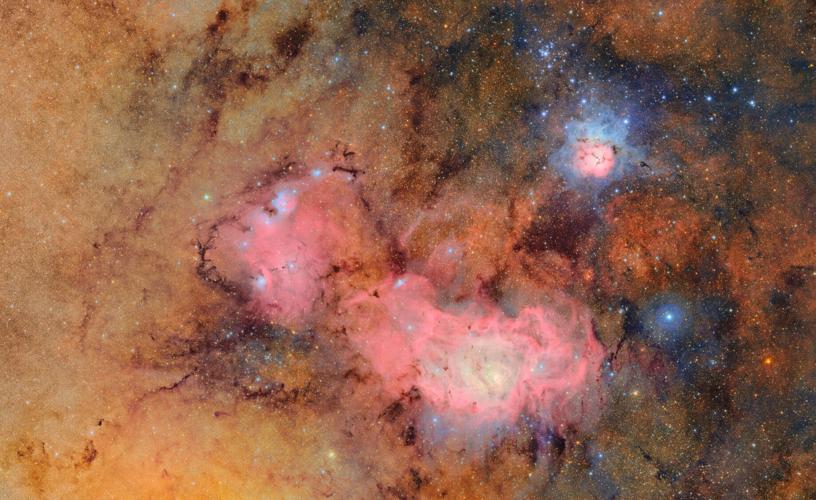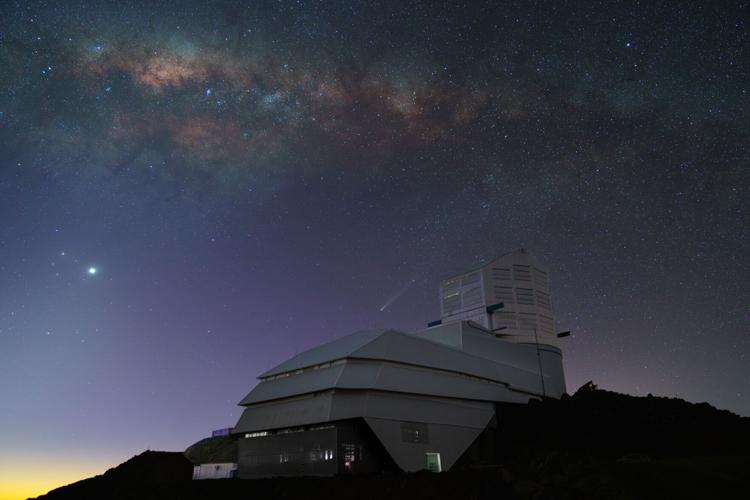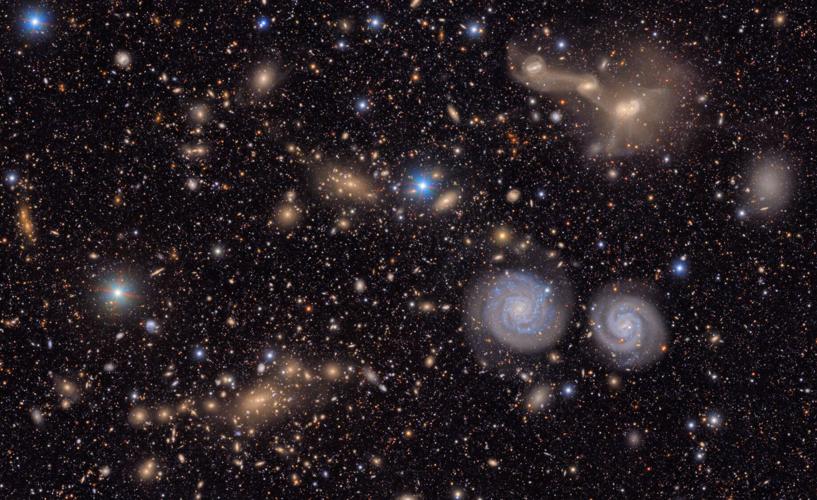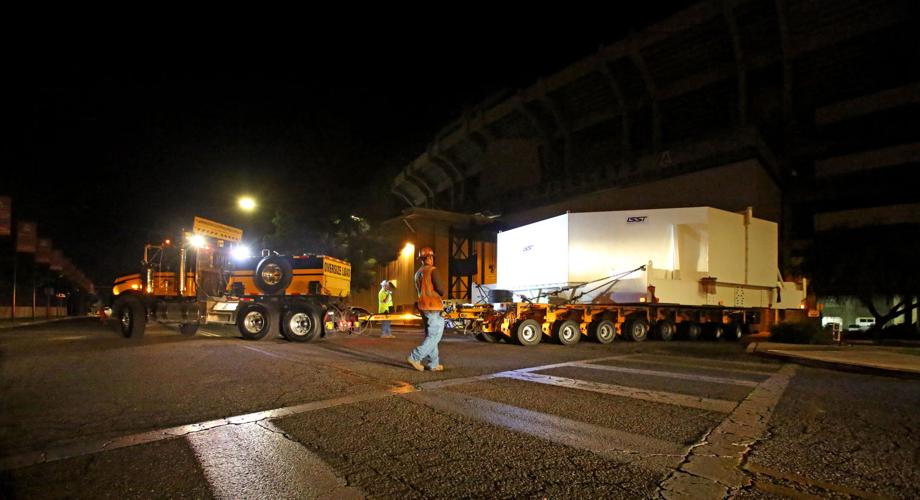Excited scientists on Monday unveiled the first images from a new observatory in Chile they are calling “the greatest astronomical discovery machine ever built.”
Starting later this year, the Vera C. Rubin Observatory will ceaselessly scan the night sky above the central Andes for 10 years to document every visible change in unprecedented detail as part of the Legacy Survey of Space and Time.
The roughly $800 million telescope, named for the pioneering American astronomer who helped discover dark matter, is being funded by the National Science Foundation, the U.S. Department of Energy and private donations.
And as usual, the Old Pueblo played an outsized role in the project.
“There is very Tucson-heavy involvement,” said , head of the Department of Astronomy and director of Steward Observatory at the University of ĂŰÁÄÖ±˛Ą. “Over 100 people just at the U of A have contributed over the life of the project.”
People are also reading…
The first image released on Monday — a dazzling array of galaxies in the constellation Virgo — offered just a small taste of what the roughly $800 million instrument can do.

Colors swirl in the Trifid nebula, top right, and the Lagoon nebula, as seen through the Vera C. Rubin Observatory in Chile using mirrors made at the University of ĂŰÁÄÖ±˛Ą. This composite combines 678 separate images captured over seven hours of observing time.
Rubin Observatory director Željko Ivezić said the full image is actually about 50 times larger and takes in roughly 10 million galaxies, the majority of which haven’t even been named yet.
“Most of these objects have never been seen by people before,” Ivezić explained during a live “First Look” press conference on YouTube.
That first image is so large and detailed, you would need an area the size of a basketball court covered with 400 ultra high definition televisions to display it at its full resolution, he said.
The new mountaintop observatory is located in Cerro Pachón, Chile, but its headquarters can be found on the U of A campus, across Cherry Avenue from Steward Observatory, at the National Science Foundation’s NOIRLab, an astronomical research institution based in Tucson since 1959.
And the local links to the project don’t stop there.
Jannuzi said astronomer and U of A drew up the first detailed designs for the instrument in 2000, back when it was known as the Large Synoptic Survey Telescope, or LSST for short.
Former U of A President John Schaefer helped kick-start funding for the project by launching something called the LSST Corporation with help from the Tucson-based .

Daniel Eames helped guide the finished mirror for the Vera C. Rubin Observatory, as it was being moved by trailer from the Richard F Caris Mirror Lab at the University of ĂŰÁÄÖ±˛Ą in 2015.
Jannuzi said the observatory’s 27-foot-diameter main mirrors were cast, polished and tested at the Richard F. Caris Mirror Lab outside of ĂŰÁÄÖ±˛Ą Stadium from 2008 until 2018, with a donation from Caris himself to pay for the first batch of glass used for the telescope.
Jannuzi joined about 200 people associated with the project to watch Monday’s broadcast of the first images from the Rudin Observatory. He said the event at the U of A’s Grand Challenges Research Building included current and former employees of the university, NOIRLab and the Research Corporation for Science Advancement.
Meanwhile, nearby hosted its own watch party for the general public — one of about 300 gatherings held around the globe to celebrate the completion of the new telescope, Jannuzi said.
The folks from were especially happy to see how crisp and detailed those first images looked, Jannuzi said. “It’s really exciting and satisfying for everyone involved.”

Galaxies glow in a small section of the first image released on Monday by the Vera C. Rubin Observatory, a mountaintop telescope in Chile that uses mirrors made at the University of ĂŰÁÄÖ±˛Ą. The full image is about 50 times larger and contains roughly 10 million galaxies.
Now a host of eager U of A faculty members and students, including some on the Rudin science team, are lining up to use the torrent of data from the new observatory in their own research.
Jannuzi said one group of scientists is interested in mapping galaxies captured by the survey while another wants to use the repeat scans to look for the flares and fades of supernova explosions. “You can only find things like that by monitoring the whole sky,” he said.
Rudin’s Ivezić said what sets the new telescope apart from earlier instruments is its ability to quickly collect huge, highly detailed images across wide areas. Every few days, the observatory will effectively produce an extremely high-definition movie of the entire sky visible from the Southern Hemisphere, allowing astronomers to track moving objects and changes almost in real time.
To capture all this data, it features the largest digital camera in the world, a 3,200-megapixel monster about the size of a car, only heavier.

The Vera C. Rubin Observatory in Chile as it looked in October 2024 beneath a night sky featuring Venus, a comet and the cloudy band of the Milky Way.
The observatory is expected to gather 10 to 20 terabytes of data each night, with imagery to be processed quickly and with other researchers and the general public.
In just over 10 hours of test observations, the observatory captured images of millions of galaxies and individual stars. It also identified more than 2,100 new asteroids, including seven near-Earth objects that had not been spotted before but are thankfully not on course to hit us, Ivezić said.
Over the course of the 10-year survey of the sky, scientists expect to observe approximately 20 billion galaxies, 18 billion stars in our own Milky Way and as many as 5 million asteroids in orbit with us around the sun.













